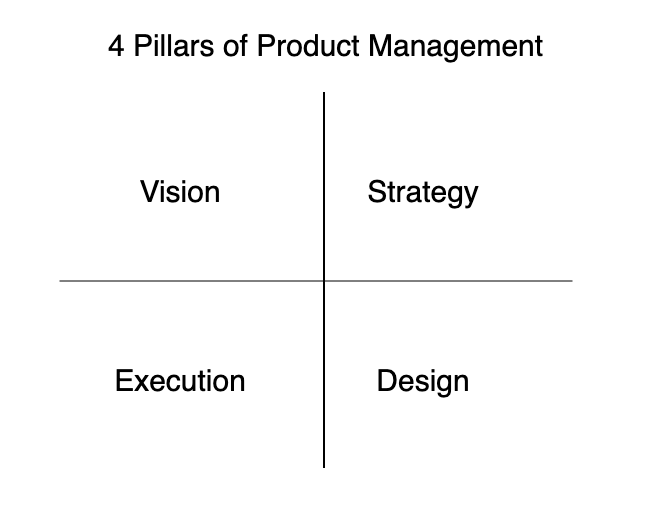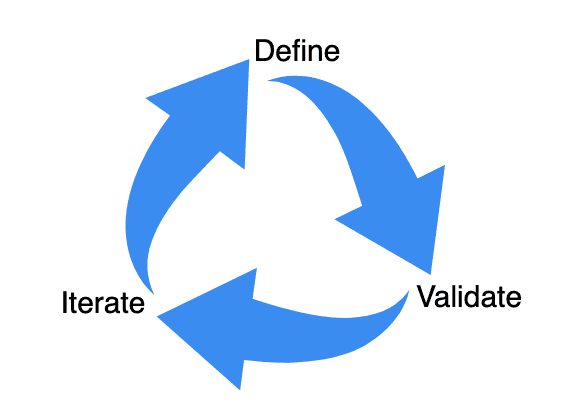4 Pillars of Product Management
Published: 18 Oct 2021
Author: Simranjeet Singh

Product management is an important function in an organisation. It is a strategic function to come up the "Why and How" behind the product. The people tasked with the product management in an organisation are called "Product Managers".
Product Managers are the people that drive the vision, strategy, design and execution of the product. The Vision, Strategy, Design and Execution are the four pillars of product management. These pillars define the why behind a product, the impact it is going to have and also the execution of the product so that it aligns well with the organisation's goals.
The Vision
The vision of the product provides the bigger picture of the product to your team. It describes the essence of your product: what problems are you trying to solve and for whom. It also describes why this is the right time to solve the problem. A product vision should be aspirational, actionable and linked to your organisational goals. If you want to make your product successful, it is very important that it has the support from the entire organisation. The product vision is a subset of the organisation vision to achieve a particular organisation goal or part of it.
The Strategy
The strategy of a product defines the plan to execute the product. The strategy is a major component which will align with the vision and helps you to define what to work on next and prioritize the tasks available to achieve the vision and goals of the product as well as the organisation. The strategy is important as it helps you to stay focussed, provides you a clear path for navigating your product. The strategy also helps yout to be align and allows you to respond and adjust more quickly to the changes in the requirements and overall business sentiment without deflecting from the actual path defined for achieving the goals.
The Design
The product design is the process where product designers blend user needs with business goals to you make successful products. The idea is to optimize the user experience and make the products easy to use and understand. A product which will help users to achieve their goals by fulfilling their needs will survive for a longer period in the market. This will help you as a product manager to retain the users and achieve the long-term goals of the organisation.
The Execution
The vision, strategy and design will not matter if there is no execution for them. Execution determines whether the product vision will convert to reality or not. The strategy and desgin are important pieces to guide the team to execute in the right way and make it a reality.
The execution is a continuous process and should be seen as a following loop.

- Define the hypthesis you are trying to build against.
- Validate the hypothesis. If Validation fails, iterate and define a new hypothesis.
- If Validation pass, iterate and improve your product based on the hypothesis.
Fast iteration in execution requires a clear strategy and vision. The decision to execute and put in hands of the customer today is more valuable than a decision which will delay the feedback loop until tomorrow.
The four pillars of product management mentioned above defines the fate of your product and the goals of your organisation dependent on the product.